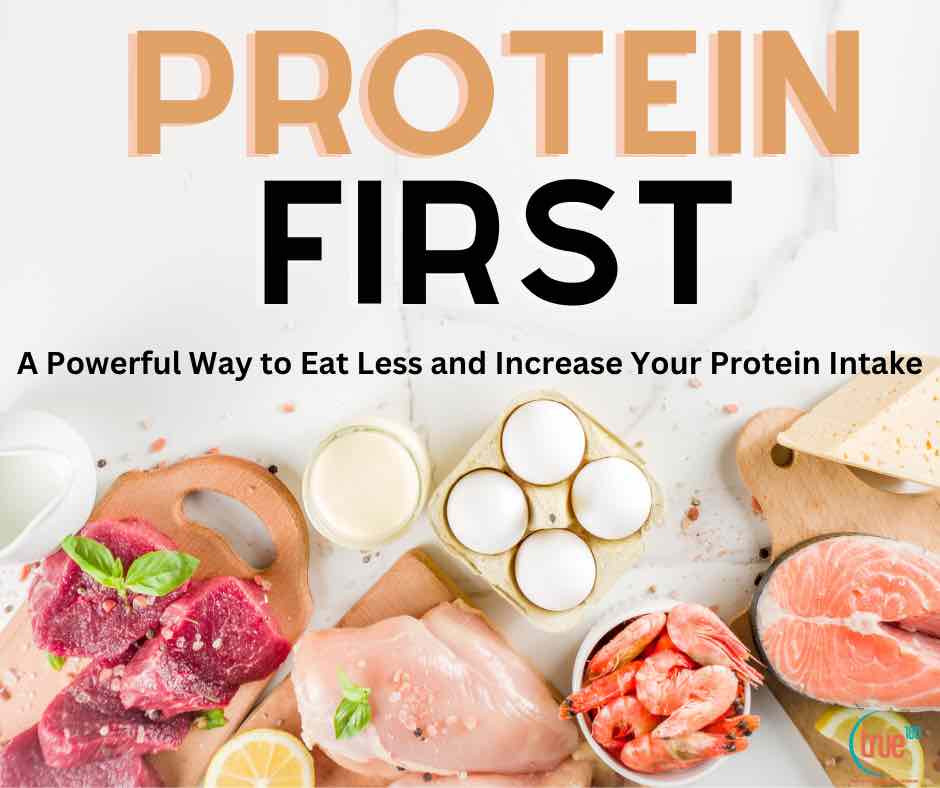Eating fewer calories and finding ways to increase your protein are the holy grail of nutrition for most people.
On the surface these seem like conflicting goals, however increasing protein can actually help you eat less if you do it right. It comes down to 3 words: protein leverage hypothesis (PLH). The PLH is pretty simple: research shows that the more protein you eat the fewer calories it takes to make you feel full if (1) the protein is from low fat sources and (2) the protein comes first.
Desperately seeking protein?
It seems like humans eat until we meet our protein needs. So the sooner and more efficiently we hit our protein needs the sooner we stop eating. When I say “efficiently” I mean low calorie protein sources, or fewer other calories per gram of protein.
For instance if you take 3 groups of people and randomly assign them to 10%, 15% and 25% calories from protein they eat differently. In research the 10% group eats about 66 grams of protein per day, and also chooses to eat 260 calories more than either the 15 or 25% groups. All groups got access to identical looking and tasting foods, and all groups got to eat as much or as little as they wanted.
The extra 260 calories per day that the 10% group ate adds up: it’s 1,820 per week and 7,280 extra calories per month, which could easily translate into 1-2 pounds of fat gained.
Putting this into action: Protein first
We don’t live in research cafeterias, so we’re not going to recreate the study in our normal lives. However, we can apply the principle with Protein First. Protein first is exactly what it sounds like – eat the lean protein first. Since most women need about 90 grams of protein per day, this means getting in 30 grams first. The biggest objection we hear to eating this much protein first is “I won’t want to eat anything else afterwards.” This objection is the point.
Don’t forget lean
Nuts, steak, Impossible brand “meat” are all too high in fat to help you get enough protein without going overboard on calories. These article will help you:
· Why nuts are a poor source of protein.
· Which veggie burgers are fat, and which are good sources of protein.
· Why steak is not a good source of protein.
· 20 ways to get 20 grams of protein.
Bottom line
Even though it can be a pain, eat the protein first. If there is no lean protein (like at most holiday feasts or celebrations) have a protein shake (just water and powder) first.
Having the very low calorie protein before your holiday meal will free you from the bad math of trying to get enough protein out of super high calorie “protein” options like prime rib (73% fat), or buffalo chicken dip (55% fat). You can still enjoy these foods, but the pre-game protein should help you feel satisfied with a little less.

